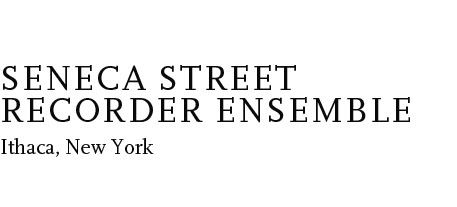(Early years)
Excerpt from a master's thesis by Eriko Aoyama:
Noah Greenberg and the New York Pro Musica: The Career, Reception, and Impact
For the complete text, here's the link:
Noah Greenberg was born in the Bronx, New York, on April 9, 1919, the first and only
child of Lillie and Harold Greenberg, who had recently emigrated from Warsaw, Poland. Already at an early age, Noah was an active child with a curious mind. In a photograph of Noah’s baseball team, Noah, who is a year or two younger than the other boys, stands out with his size and confident smile. James Gollin interprets it as “the determination of somebody who will never let himself be left out or overlooked, even if he’s not fully part of whatever it is that’s going on.”
Music was a great and important part of the life of the Greenberg family. As Gollin aptly puts it, the “Jewish Bronx . . . was steeped, was virtually marinated, in music.” Families and friends gathered regularly to sing, play instruments, or listen to and talk about music, from folksongs and workers’ songs to operas and classical music. At age fourteen, Noah began to study composition with Arnold Zemachson, a highly promising Russian composer who had his recent orchestral work premiered by the Philadelphia Orchestra under Leopold Stokowski. In the two years of study with him, Noah learned some basic theory and harmony and the potential of “the drama that could be gained by combining rigorous musical structure with novel and expressive sonorities,” and developed his notable skill in music notation and copying.
Around 1935 Greenberg met Harold Brown, who was then one of the substitute teachers at James Monroe High School, which Greenberg attended. Brown, a graduate of Columbia, was an aspiring but struggling composer, who, in his “introverted, intense argumentative” style, was said to have had “very strong views on music and everything else, most especially on politics.” It was because of Brown that Greenberg gave up piano and started on double bass, and got heavily involved with the leftist socialist and Trotskyite movements. Thus Greenberg’s formative teenage years were dedicated to political activities and music. Among his circle of musicians were Robert Levenstein, Barry S. Brook, Israel Horowitz, and Harold Brown; all of them became professional musicians. They gathered to listen to music, attend concerts, study music scores, and exchange their thoughts on music.
After graduating from high school at age seventeen, Greenberg moved in with Harold Brown. It was Brown who introduced Greenberg to early music. Brown, an accomplished violist and aspiring composer who was Columbia University’s Mosenthal Fellow in Music Composition in 1930 and who later studied with Nadia Boulanger, was also a philosopher of music. One of his firm beliefs was that “beauty and meaning in music are functions of musical structure.” For Brown, structure gave music its meaning and aesthetic value. For a musical work to be successful, this structure must be expressed clearly by giving energy and forward movement in phrasing. Brown was very critical of the contemporary classical music scene with its overemphasis on virtuosity and fame. He thought that this system of making classical music into a business was corrupting the music itself. Furthermore, Brown disdained large-scale Romantic works because he believed that their “ornate orchestration” served to cover up the structural weakness of the compositions, thus violating the “very nature of music.” James Gollin partially attributes Brown’s steadfast adherence to his strong opinions to “the arrogance and iconoclasm of youth and to Harold’s chronic dissatisfaction with life,” but this frustration led Brown to search into the music of the distant past. For Brown, music of the Middle Ages and Renaissance was the only kind of music “in which structure is indeed allimportant.” It did not discourage him that early music was not well known or not performed often. Brown, together with Greenberg, meticulously studied scores and manuscripts of works by early masters that they could obtain from the Fifty-eighth Street Music Library, and “they puzzled over Gregorian neumes and tried to imagine what the masses of Isaac, Ockeghem, Josquin, and Lasso would sound like if singers could be found to sing them.”
